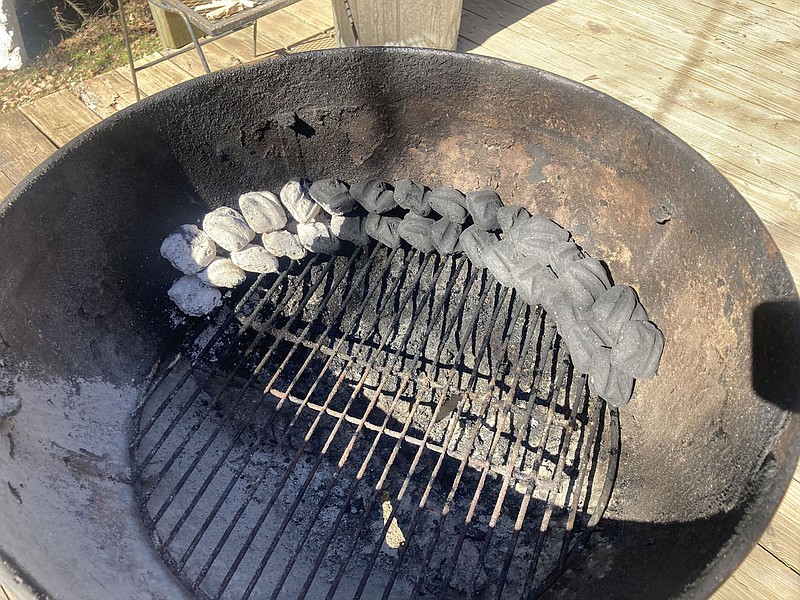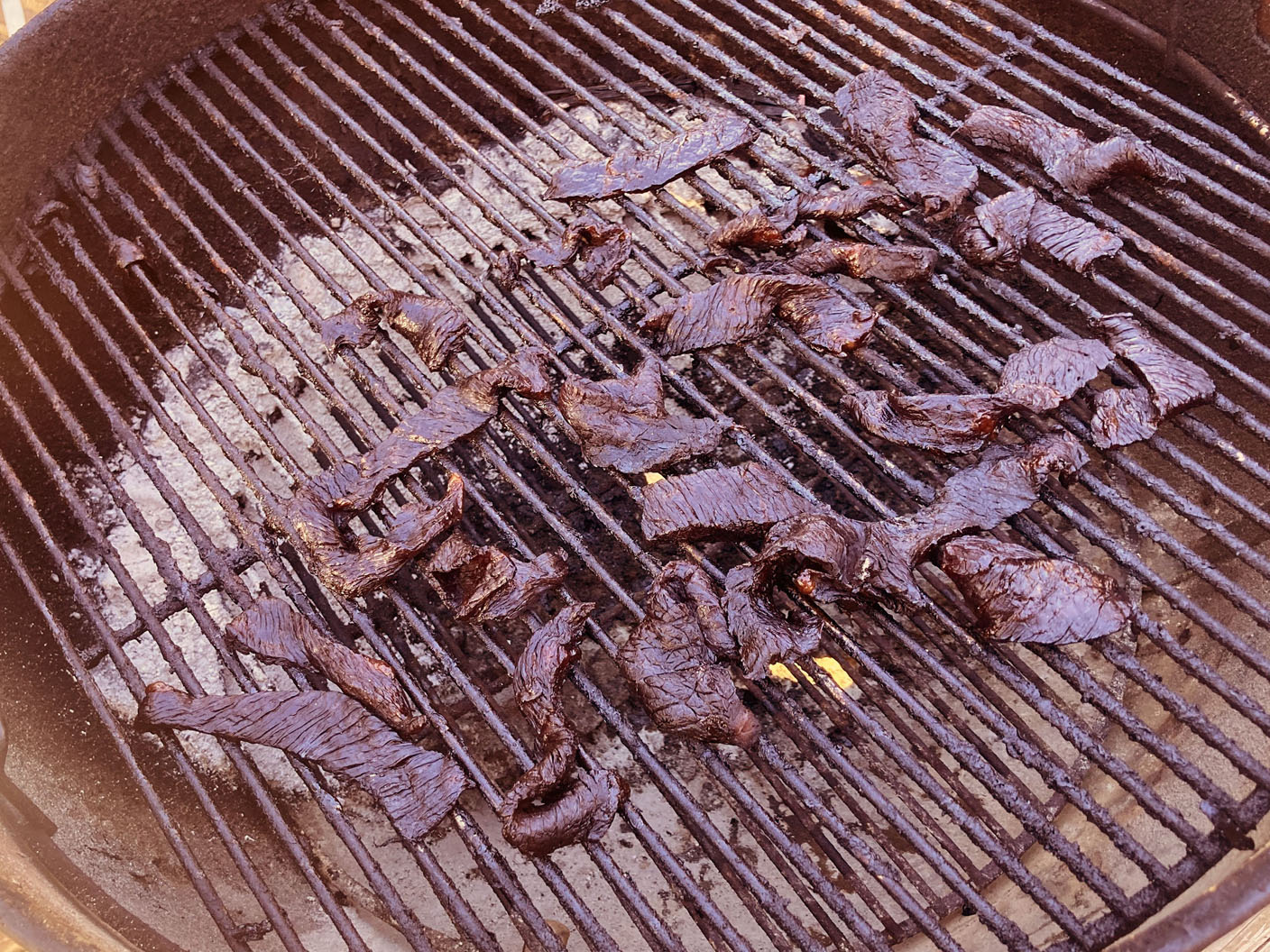Deer hunting is over for this season, but the fine dining goes on with tasty and nutritious venison in the pan or on the grill.
Making jerky is one way to make use of any cut of venison or beef. It's easy to whip up a batch of venison or beef jerky on a grill.
Here at Camp See No Deer, we use a kettle-style charcoal grill with a lid. Camp See No Deer has lived up to its name, so we enjoyed fixing two batches of beef jerky to pass the cold weather of February.
We use one pound of round steak cut into strips about one-eighth-inch thick for our jerky. Then we stir up a simple marinade and soak the strips in it overnight. For the marinade, stir together three-fourths cup of soy sauce, and one half cup brown sugar. Optional, but recommended additions are one and one-half teaspoons liquid smoke and one-half teaspoon of meat tenderizer. This should be enough marinade to cover the meat in a medium sized bowl.
For a tasty teriyaki marinade, use one-fourth cup teriyaki sauce and one-half cup of soy sauce.
Making jerky is more drying out the meat than cooking it, so a low temperature inside the grill is key. For this we arrange a single row of charcoal briquettes half way around the grill at the edge of the bottom grate that holds the charcoal. The row looks like the letter C. Place another row of briquettes on top of that. Be sure the briquettes are slightly touching one another.
Now light one end of the briquettes, maybe the first three or four charcoal pieces, in each row. This way the charcoal burns slowly for hours as if it were a slow-burning fuse. It creates a low temperature of 130 to 160 degrees inside the grill.
We like to put some hickory chips on top of the charcoal so the jerky gets some smoke flavor. Lay out the meat strips on the top grill grate and put the lid on.
How long to let it "cook" depends on the grill's temperature. When we made jerky in early February on a 25-degree day, the grill temperature was a steady 130 degrees. The jerky was ready in five hours.
The next jerky session was on a 65-degree day. The grill temperature was 150, and we cooked the meat strips about four hours. The best way to tell if it's done is just take a bite. If it eats like store-bought jerky, it's done.
It may take a bit of trial and error to come up with the optimal grill temperature and cooking time, but that's true with a lot of grilling or smoking. A computer search will turn up all kinds of marinade recipes to try, from simple to complex.
Another way is to make jerky in the oven or dehydrator. Set the oven temperature at 170 and cook the strips on a wire rack three or four hours. Set a dehydrator's temperature at 160 and cook four or five hours.
The only down side we've found to making jerky is once you chow down on a strip or two you want to eat the whole darned batch.
Flip Putthoff can be reached at [email protected]


